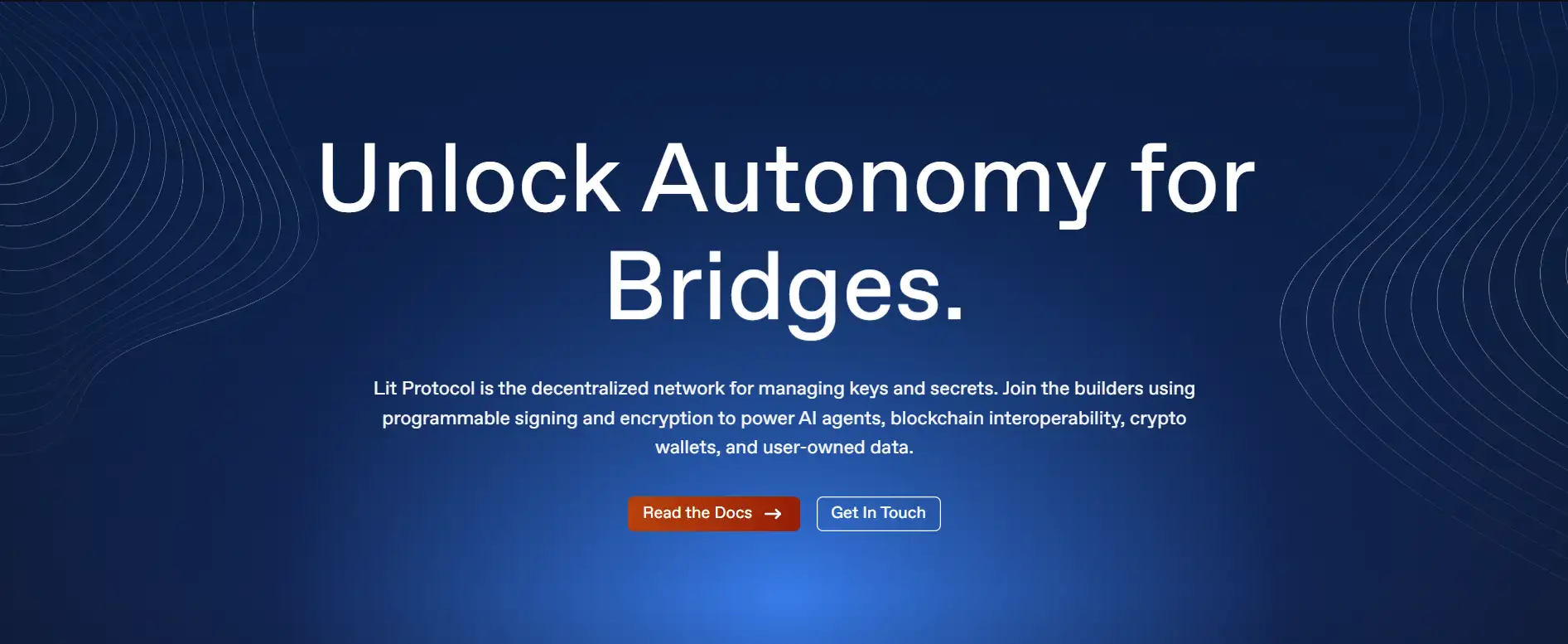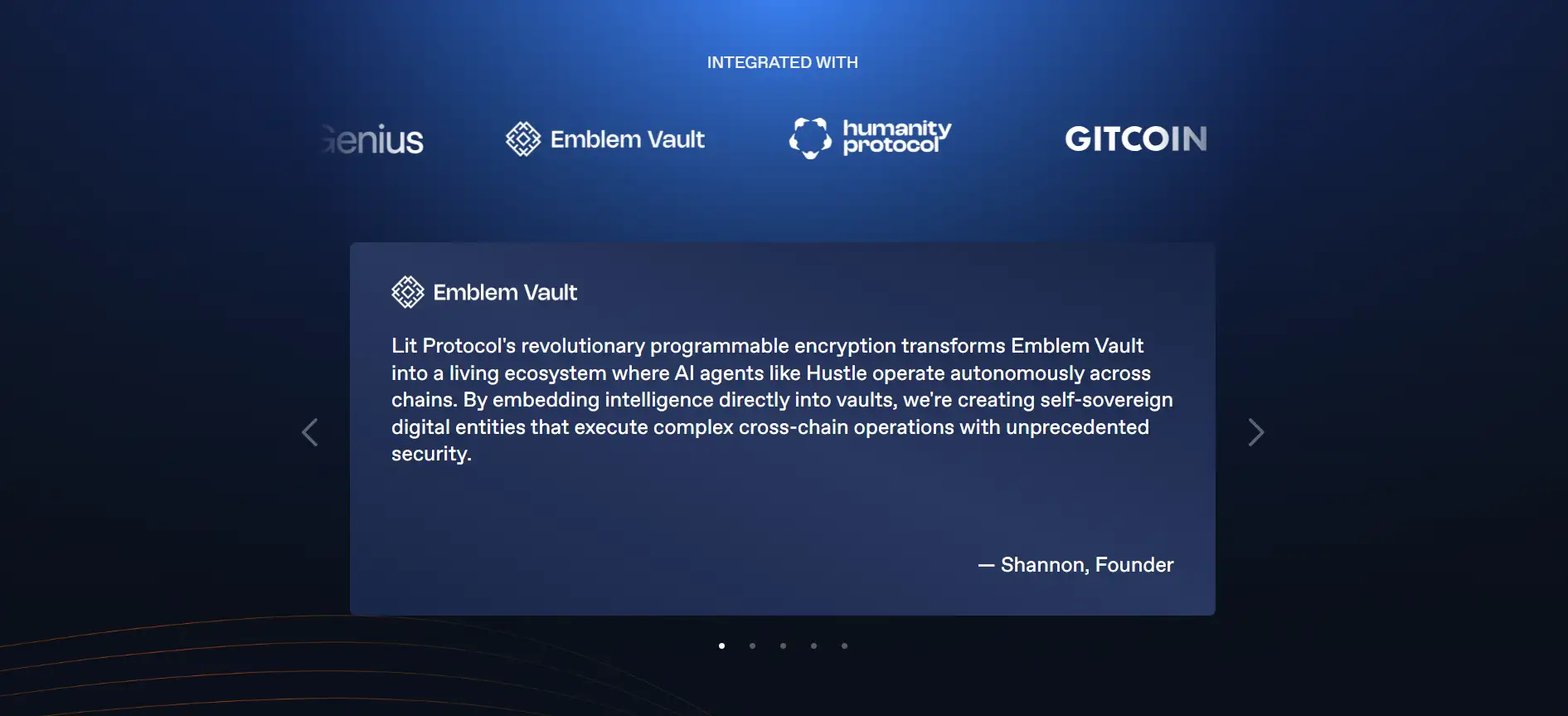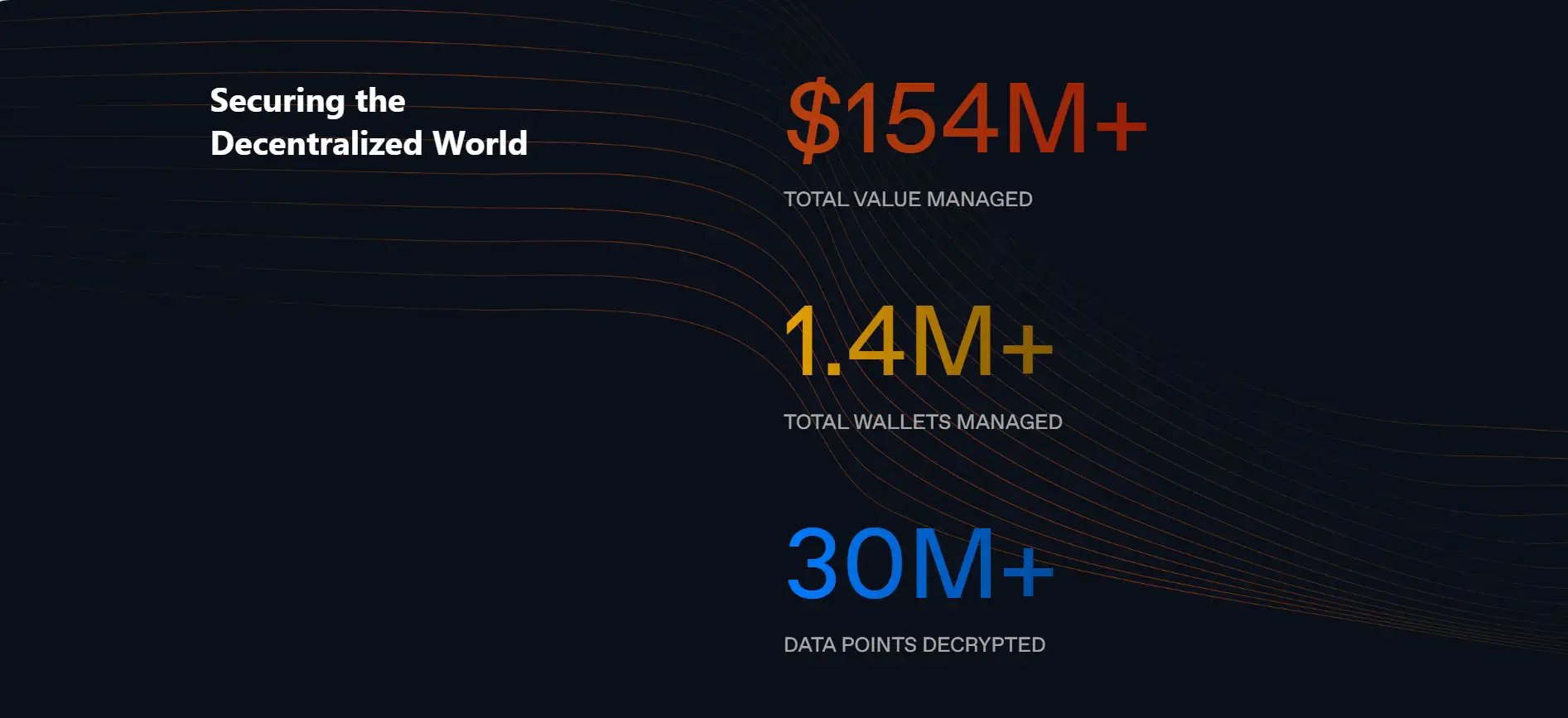About Lit
Lit Protocol is a decentralized, programmable key management and encryption network designed to give developers and users secure control over digital assets, private data, and automated processes. By combining Threshold Multi-Party Computation (MPC) with Trusted Execution Environments (TEEs), Lit Protocol ensures that private keys and secrets are never held in one place, removing single points of failure. This architecture enables the creation of universal accounts, agent wallets, cross-chain interoperability tools, and privacy-preserving applications across both Web3 and Web2.
The mission of Lit Protocol is to unlock autonomy for wallets, AI agents, bridges, and vaults by making secure signing and encryption programmable. Developers can use Lit Actions—immutable JavaScript serverless functions—to define transaction rules, spending limits, automated workflows, and conditional access to data. These capabilities are already powering AI-driven agent frameworks like Vincent, cross-chain DeFi solutions, decentralized data marketplaces, and privacy-first user applications.
Lit Protocol fills a critical gap in the Web3 technology stack by providing a decentralized layer for secret management, making signing and encryption a native computing primitive. Instead of relying on centralized custodians, keys are created via a Distributed Key Generation (DKG) process, fragmented into shares, and stored across a network of independent nodes. Each node runs within a TEE, providing hardware-level isolation and protection, while collectively meeting a two-thirds threshold to execute any signing or decryption request.
This architecture enables secure, policy-driven control over assets and data. Developers can write Lit Actions to enforce custom rules, such as who can access encrypted files, how and when transactions are signed, or which cross-chain operations are permitted. These functions can fetch on-chain and off-chain data, execute complex logic, and operate entirely without exposing the underlying keys.
Key use cases include Universal Accounts—wallets that operate seamlessly across Bitcoin, Ethereum, Solana, Cosmos, and more—User-Owned Data systems where access is dynamically controlled, and Agent Wallets that power autonomous yet verifiable AI agents. Partners such as Emblem Vault, Beacon Protocol, Tria, and Genius Bridge already use Lit Protocol to deliver interoperable, secure, and censorship-resistant services.
In the broader decentralized security landscape, Lit competes with solutions like Threshold Network and Shamir Secret Sharing-based systems, but stands out for its programmable JS execution layer, native multi-chain support, and deep integrations with AI and interoperability projects. By blending cryptography, decentralization, and developer flexibility, Lit Protocol is becoming a foundational security layer for the next generation of blockchain and AI applications.
Lit Protocol offers powerful security and programmability features:
- Threshold MPC + TEE Security: Keys are never fully exposed, staying fragmented and encrypted at all times.
- Lit Actions: Immutable JavaScript functions to define custom signing, encryption, and access control policies.
- Universal Accounts: Multi-chain wallets that work seamlessly across different blockchains without custodians.
- Agent Wallets: Verifiable AI and automation agents with user-defined permissions.
- User-Owned Data: Build apps where users retain full control over their private data.
- Cross-Chain Interoperability: Program private keys to bridge assets and execute cross-chain operations securely.
- Developer-Friendly: Robust SDK, APIs, and documentation for quick integration.
To start building with Lit Protocol:
- Visit the Lit Protocol website and review the Docs section.
- Set up an account on the Datil mainnet or testnets to start experimenting with Lit’s capabilities.
- Install the Lit SDK and follow the quickstart guides to make your first signing or decryption request.
- Create Lit Actions to define policies, workflows, and access control logic.
- Integrate Lit into your app for use cases like universal accounts, agent wallets, or encrypted data sharing.
- Join the Lit developer community on Discord and Telegram for support and collaboration.
Lit FAQ
Lit Protocol uses Threshold Multi-Party Computation (MPC) to split private keys into multiple encrypted shares and distribute them across independent nodes. Each node runs inside a Trusted Execution Environment (TEE), providing hardware-level isolation. No single party ever holds the full key, and all signing or decryption operations require participation from more than two-thirds of the network. This ensures that even if some nodes or hardware are compromised, the underlying secrets remain secure.
Lit Actions are immutable JavaScript serverless functions that run on the Lit Protocol network to control how keys and secrets are used. Developers can define transaction rules, spending limits, automated workflows, and access control policies. These functions execute within the same MPC and TEE-secured environment as the network’s core operations, allowing for programmable signing, encryption, and cross-chain interoperability without exposing private keys.
Lit Protocol supports universal accounts by managing private keys in its decentralized network and making them programmable through Lit Actions. These accounts can transact on multiple chains—such as Bitcoin, Ethereum, Solana, and Cosmos—without requiring users to manage separate wallets or keys. Developers can use this to orchestrate cross-chain liquidity, automate asset movements, and create chain-agnostic user experiences.
Lit Protocol powers frameworks like Vincent that enable the creation of agent wallets—autonomous, verifiable AI agents that can securely manage keys, data, and transactions. Developers can set fine-grained permissions, such as spending limits or execution schedules, enforced by Lit Actions. This allows AI agents to operate independently while remaining under user-defined rules and cryptographic verification.
With Lit Protocol, developers can encrypt user data and define access control conditions that determine exactly who can decrypt it and under what circumstances. The encrypted data can live on the open web—stored in decentralized systems like IPFS—while the decryption keys remain secured by the Lit network’s MPC+TEE architecture. This enables privacy-preserving apps, data marketplaces, and user-controlled content sharing without centralized key custody.
You Might Also Like












